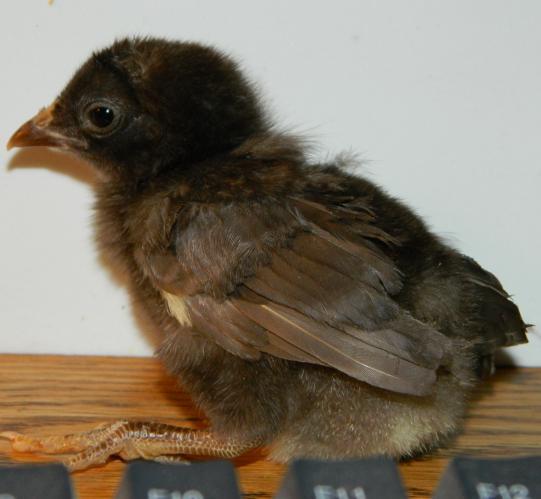When in doubt if he is dun, look at the dark spot in his tail.
Navigation
Install the app
How to install the app on iOS
Follow along with the video below to see how to install our site as a web app on your home screen.
Note: This feature may not be available in some browsers.
More options
You are using an out of date browser. It may not display this or other websites correctly.
You should upgrade or use an alternative browser.
You should upgrade or use an alternative browser.
Post Your Chocolates, Dun ,Khaki , Platinum Bird Pics
- Thread starter Tony
- Start date
thats right, chocolate dilutes evenlyWhen in doubt if he is dun, look at the dark spot in his tail.
I always understood that there is dominate/ recessive and then there is sexlinked which is carried on the X chromosome. making this 2 separate things.
Quote: All genes are either dominant or recessive. All genes are either autosomal or sex-linked. Two separate things. Kind of like saying that all slacks either have pockets or not, & that all slacks are either black or some other colour.
it maybe me you are talking about. I have a khaki (light brown) colored silkie roo (he's paint as well)
and I bred him with several hens and the ones that produced khaki were mostly (if not all) splash hens. I'll have to take some pictures and post them up.
in this post #4111 is a picture of one of my khahi's that I sold as a hatching egg.
https://www.backyardchickens.com/t/1370/maine/4110#post_9593631
Quote: I had wondered if your khaki birds were from paint. If so, I doubt they are truly khaki (homozygous dun). That said, the colouring is quite similar to khaki.
most dominant gene are infact incompletely dominant. Rose comb is one of the few Completely dominant gene..All genes are either dominant or recessive.
R. Okimoto :
Most of the time you get what you expect. There are rare exceptions. Most of the time geneticist make the distinction between incompletely dominant and incompletely penetrant. Blue is an example that is incompletely dominant and sometimes it is incompletely penetrant.
Complete dominance is when the heterozygotes look like the homozygotes. Rose comb is an example of this, you have a hard time telling the Rr birds from the RR by how they look. You can tell by other associated phenotypes like fertility, but you can't tell by how the comb looks. Incomplete dominance is when you can tell the heterozygotes from the homozygotes. Dominant white and blue are referred to as incompletely dominant for this reason. There are rare occasions, probably due to genetic background that the dominant alleles are not expressed. Hen feathering and muffs and beards are common examples, the incompletely dominant genes are usually expressed in the heterozotes, but there are a lot of times that you can't tell that the heterozygotes have the dominant gene. These cases are usually called incomplete penetrance. Sometimes (5 toes may be an example) birds that are homozygous for the dominant allele do not express the phenotype or only partially express it. These cases are also called incomplete penetrance.
Quote: I was looking for simplicity--explaining that dominant/recessive is entirely separate from sex-linked/autosomal. Yes, most "dominant" genes are not completely dominant.
I know, I just love doing that thoughI was looking for simplicity

In my experience rosecomb does not look the same in one or two copies... 

Well guys something strange is going on with my flock, as I have stated earlier, my current breeding program is to isolate and extract the Dominant Pheomelanin diluter Di(Dilute) from Self Buff... doing this cross showed that my hen is carrying Blue, or a blue like gene, but as my breeding has progressed it seems that she may infact carry Dun or a blue gene that behaves like blue and dun at the same time, because I´m getting 3 shades of blue, Light Platinum blue, Dark Blue and Mauve like blues...
here pics of my Mauve like hen...








there could be many reason for this phenotype, one of them is that the hen is a very rusty blue(ground color leakage) this is a third generation Birchen back cross to buff but lacking Db(columbian restrictor)... and the fact that Di has not been documented on Blue Birchen birds, Di could infact be Diluting blue to a Mauve/Platinum Blue like shade..
this the other blue color seggregating..
Dark blue and Platinum Blues(lighter Mauves)



here pics of my Mauve like hen...
there could be many reason for this phenotype, one of them is that the hen is a very rusty blue(ground color leakage) this is a third generation Birchen back cross to buff but lacking Db(columbian restrictor)... and the fact that Di has not been documented on Blue Birchen birds, Di could infact be Diluting blue to a Mauve/Platinum Blue like shade..
this the other blue color seggregating..
Dark blue and Platinum Blues(lighter Mauves)
Last edited:
New posts New threads Active threads
-
Latest threads
-
Is this fowl pox? Is there any way to treat it? Please help
- Started by mahampire
- Replies: 0
-
-
Thank you everyone for sharing your knowledge and helping to save Flora
- Started by Worcester_Cat
- Replies: 1
-
Shell less egg suck in the my silkies bottom?
- Started by HeartBella
- Replies: 1
-
-
-
Threads with more replies in the last 15 days
-
-
-
-
Chicken Butt Emergency ‼️ Please Help!
- Started by urlocalcrazychickenlady
- Replies: 57
-
Open Contest BYC Poultry Caption Contest 11-28-25 Pic by Ponypoor
- Started by TwoCrows
- Replies: 49
-
×




